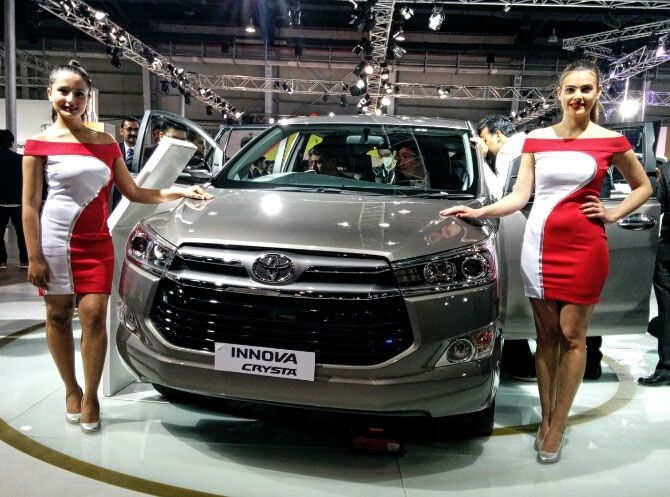For players like Toyota Kirloskar and Ford, the contribution of UVs to overall sales is now well over 60%.
The fast-growing sports utility segment of the passenger vehicle industry is becoming a key contributor to the sales volume of car makers.

A number of companies are now getting at least one-fourth of their domestic sales from utility vehicles. For players like Toyota Kirloskar and Ford, the contribution of UVs to overall sales is now well over 60 per cent.
Japanese car maker Honda now gets over a third of its sales from SUVs. With the launch of the WR-V last year, the contribution of this segment to Honda’s total sales doubled to 35 per cent during FY18, against just 17 per cent in FY17.
Rajesh Goel, senior vice-president and director (sales and marketing), Honda Cars India, said that the rising demand for SUVs was a global phenomenon and that he expected this trend to gain momentum in the future.

Homegrown car maker Tata Motors got almost 28 per cent of its FY18 sales from SUVs, thanks to a successful launch of the Nexon and to some extent the Hexa, both during the 2017 calendar year. The contribution of SUVs to total domestic sales was just 12 per cent in FY17.
While for Honda and Tata Motors, the rise in SUV contribution is a recent phenomenon, players like Ford and Toyota had been getting at least half of their sales from SUVs for a few years. But even these two manufacturers have seen a surge in the contribution from SUVs.
Take for example the case of Toyota, which thrives on the popularity of the Innova and even Fortuner. The SUV share for the Japanese brand stood at a high 53 per cent in FY16, but rose further to 64 per cent in FY17 and even higher to 70 per cent in FY18. N Raja, deputy managing director, says the share of SUVs could grow further, but Toyota is facing a capacity constraint in the lines used for manufacturing these vehicles. Its Innova is the fourth most sold UV in the country.

For market leaders Maruti Suzuki and Hyundai, both of which have a strong portfolio of small cars -- hatchbacks and sedans -- SUVs have emerged as a key segment in the past couple of years, but these account for less than a fourth of sales. Korean car maker Hyundai, the second-biggest player in the domestic car market, saw a fifth of its sales coming from SUVs in FY18, up from 19 per cent in FY17 and 13 per cent in FY16. The Creta, one of its most successful recent launches, was the second most sold UV in the country last year, with a total volume of 107,136 units.
Maruti Suzuki, the largest car maker, has a more diversified UV portfolio, with the Ertiga, S Cross and the Vitara Brezza. But due to a large base of small cars and sedans, UVs account for a little over 15 per cent for the company’s sales, though it is the biggest segment player. But the share has doubled from just 7 per cent in FY16. The Brezza, the most sold SUV in the country, clocked a volume of 148,462 units during FY18. The Ertiga stood fifth in the list of top UVs, with a volume of 66,141 units last year.
For the domestic industry as a whole, UVs brought 28 per cent of the total passenger vehicle sales in FY18, up from 25 per cent in FY17. UV sales in the domestic market expanded at an impressive 21 per cent rate last year to 921,780 units, maintaining the trend of double-digit growth seen in the past few years.
Calculations based on data from Siam, manufacturers












 © 2025
© 2025